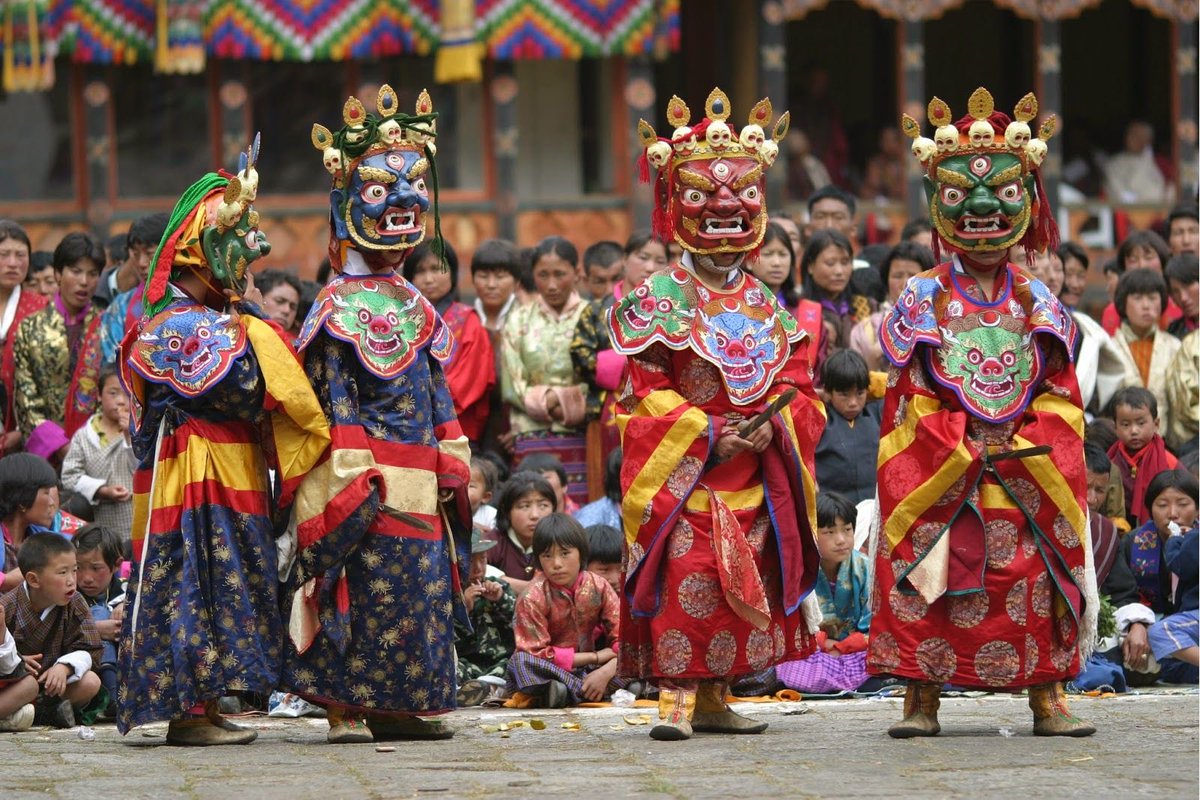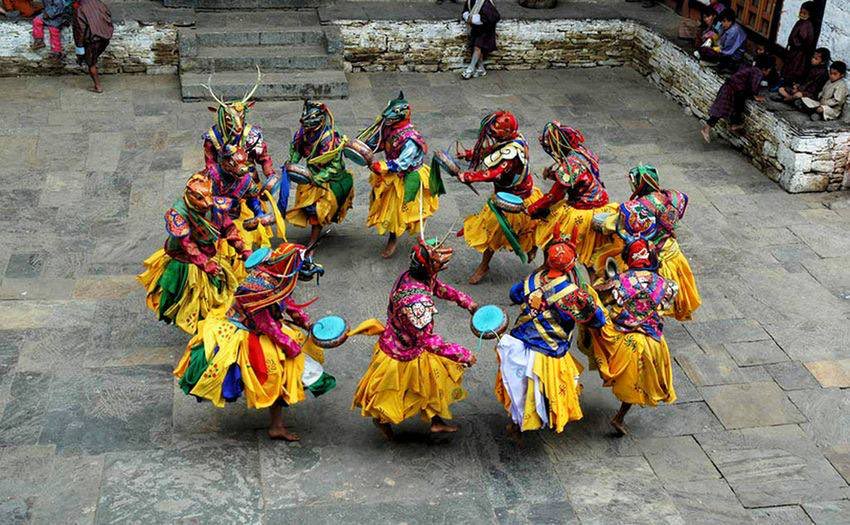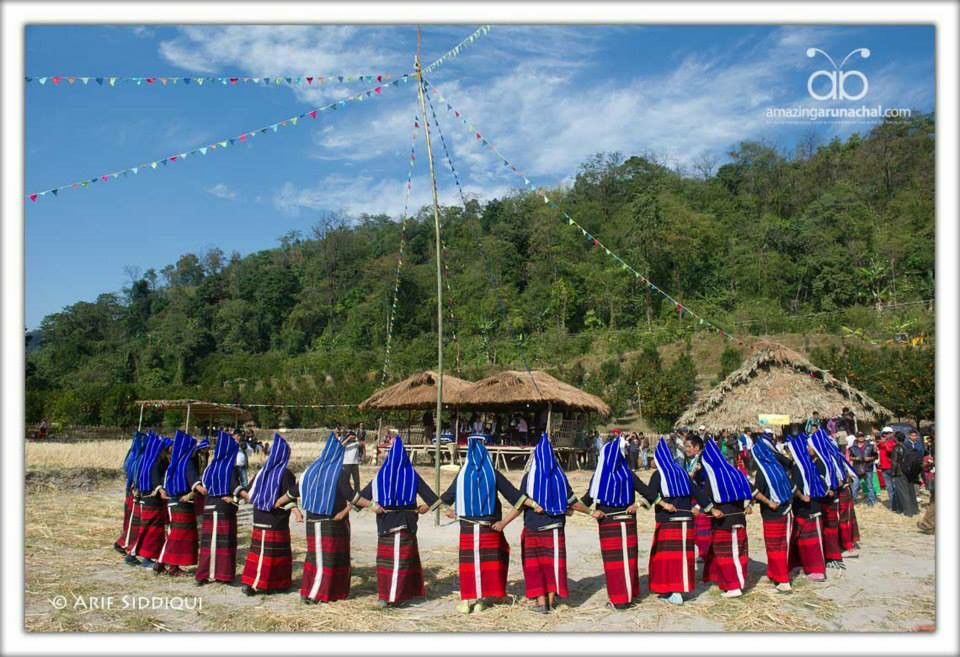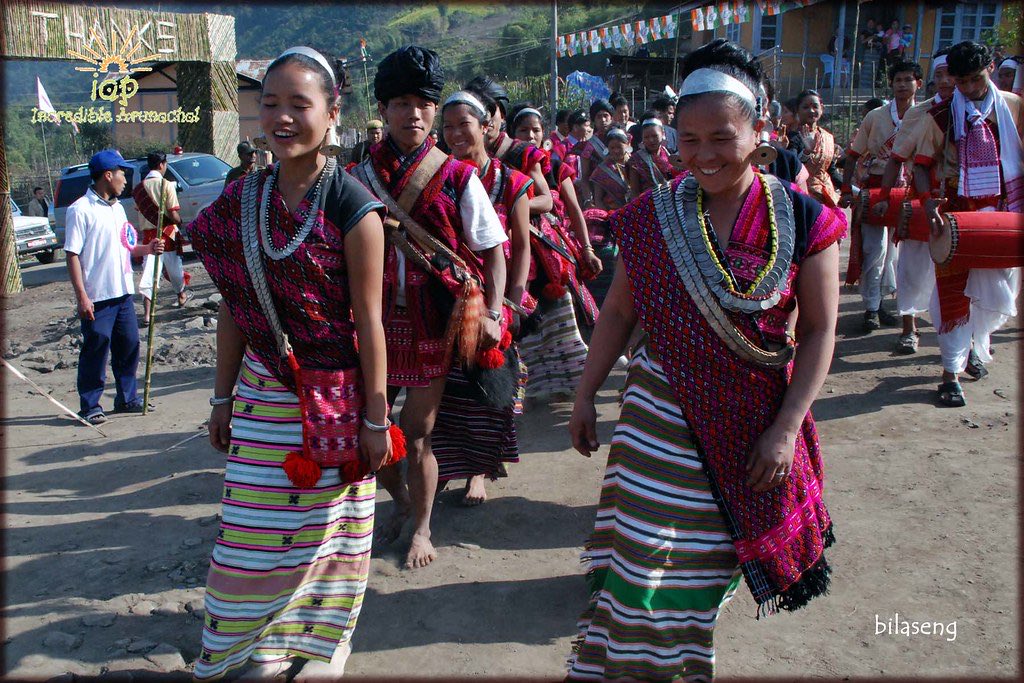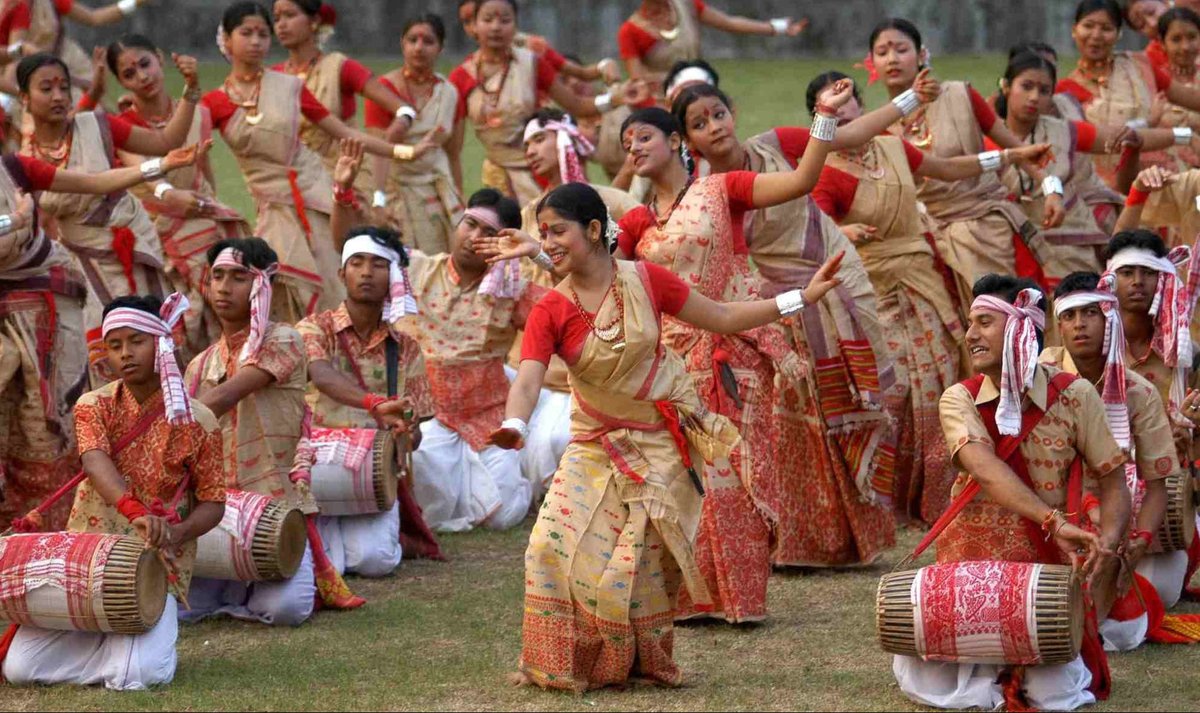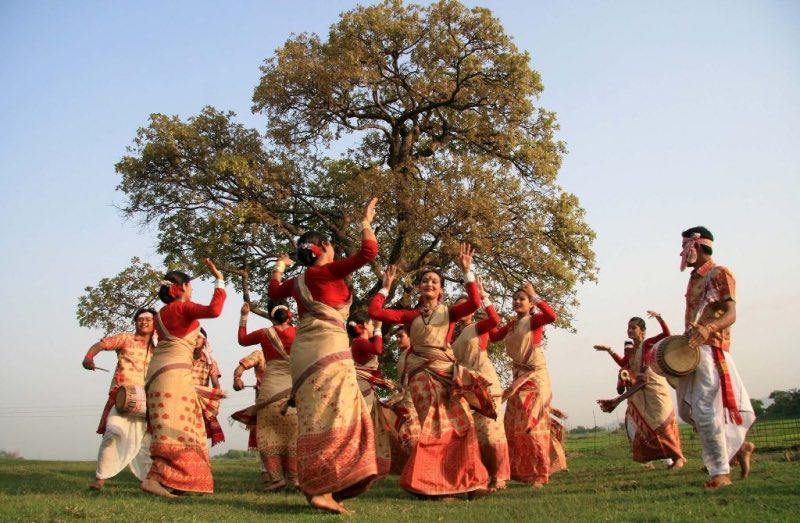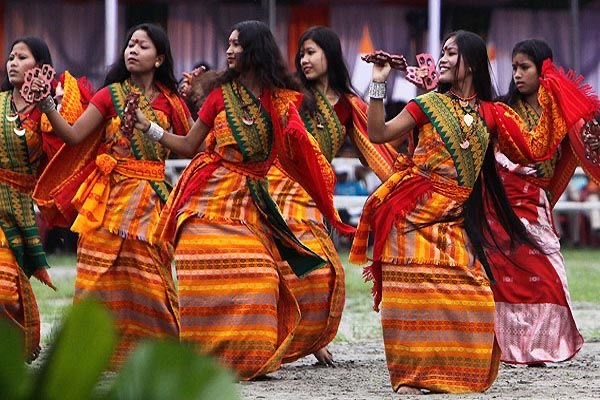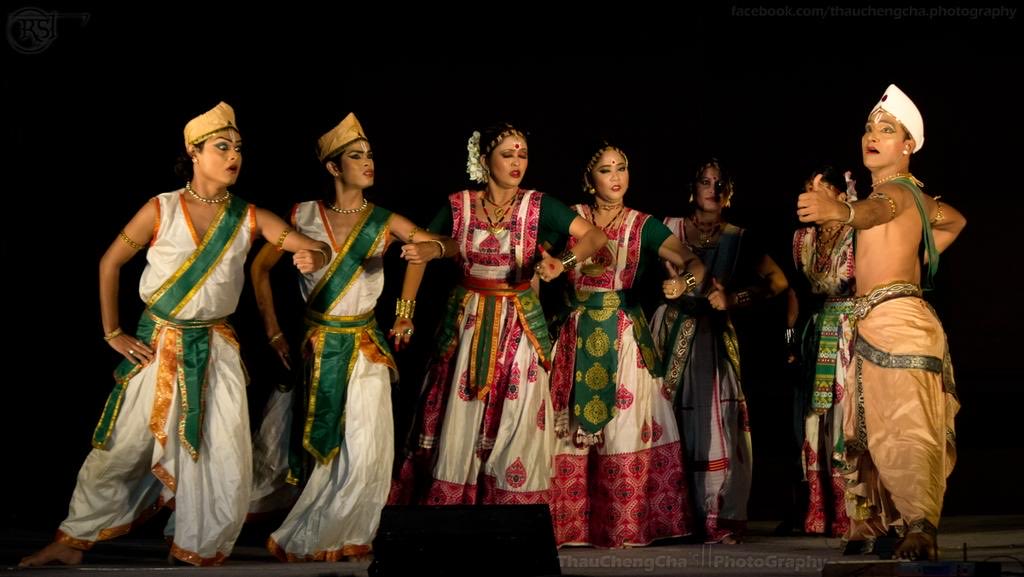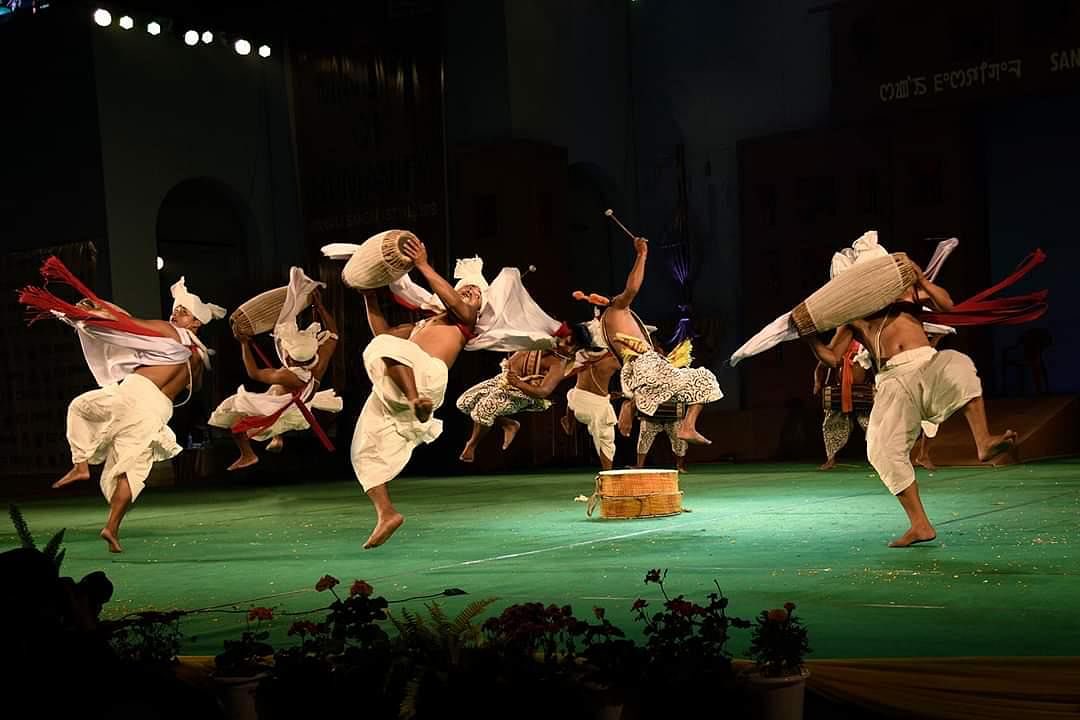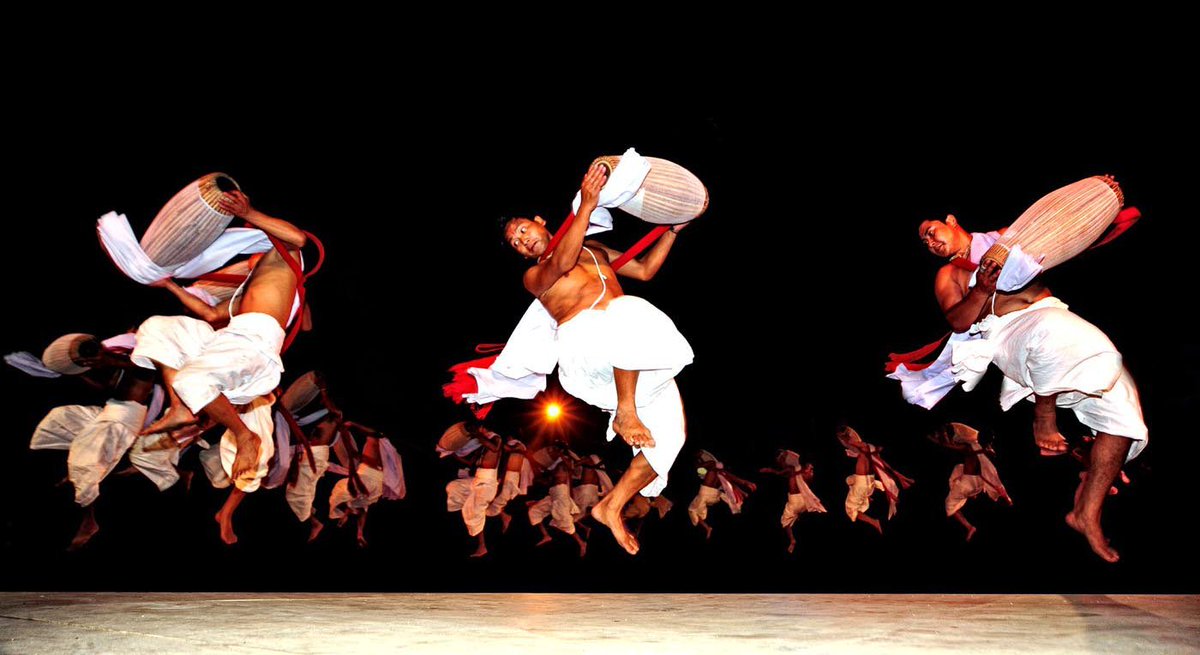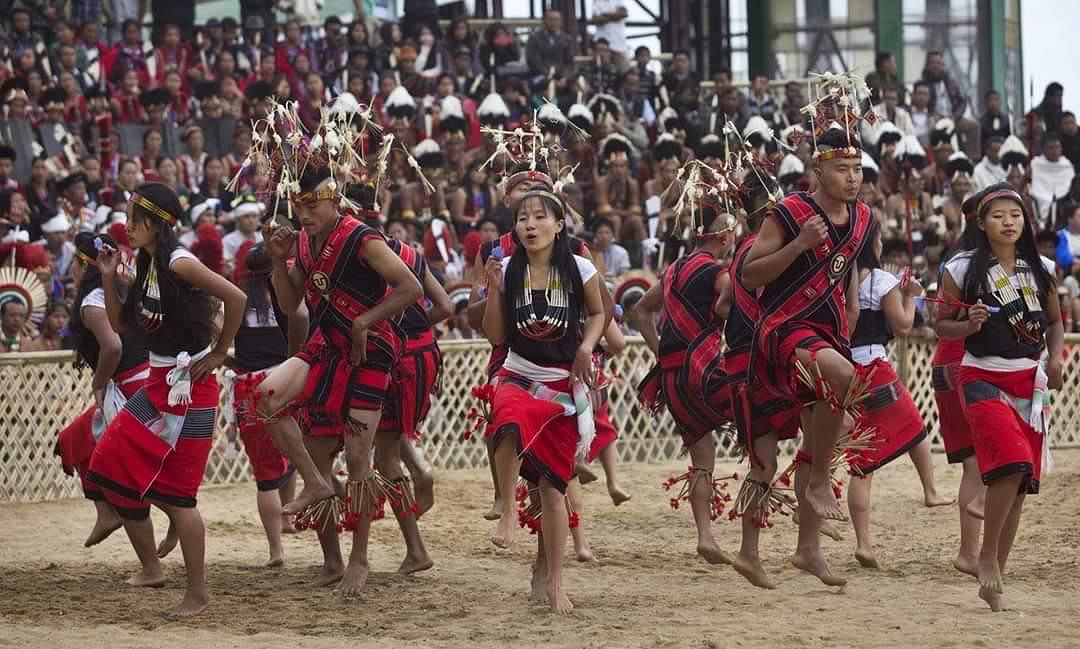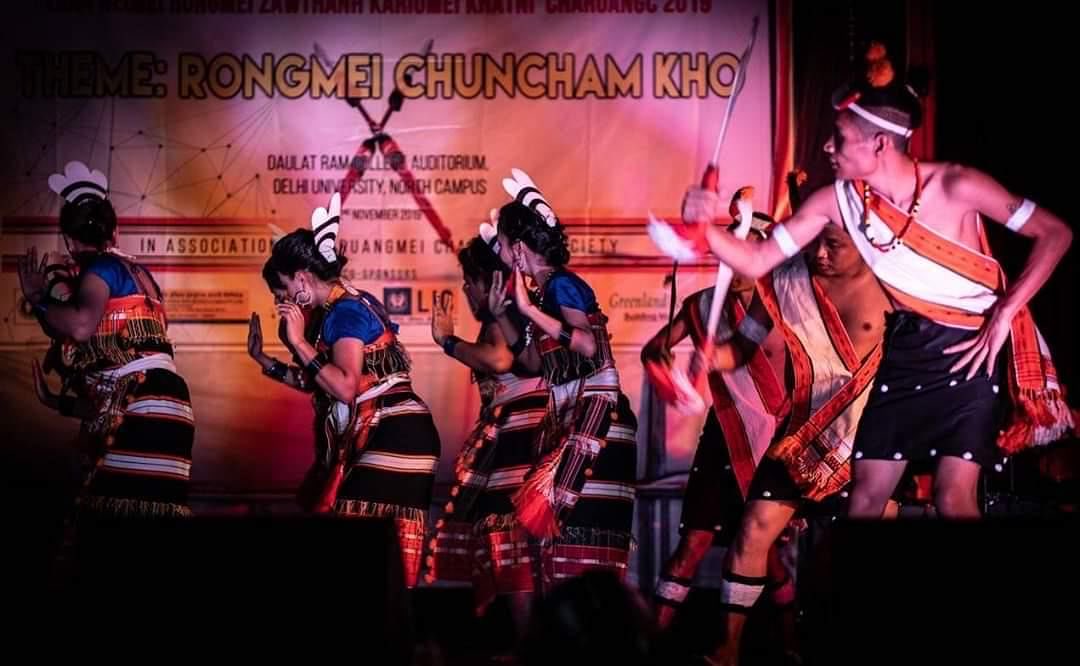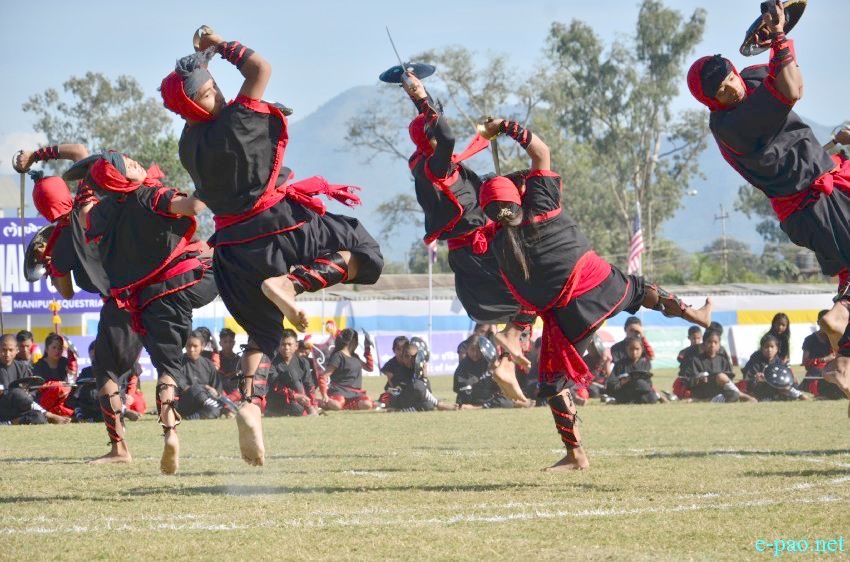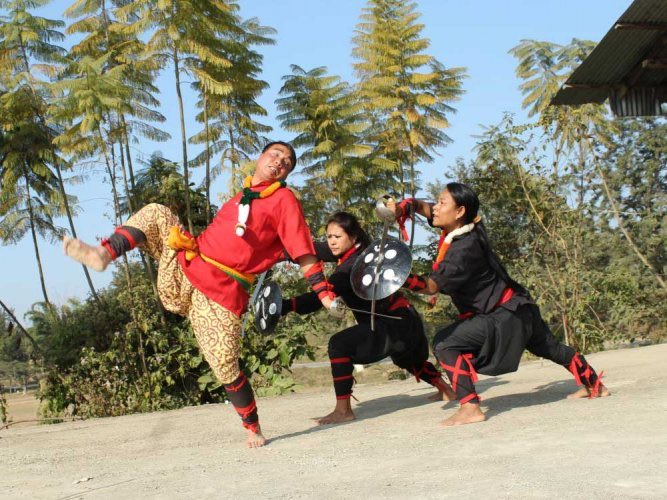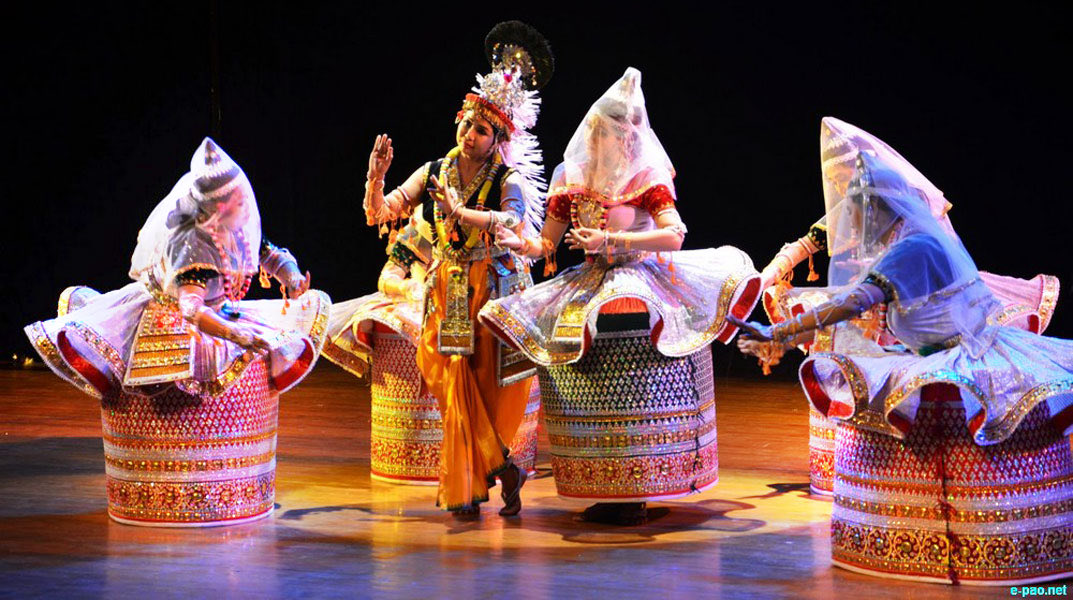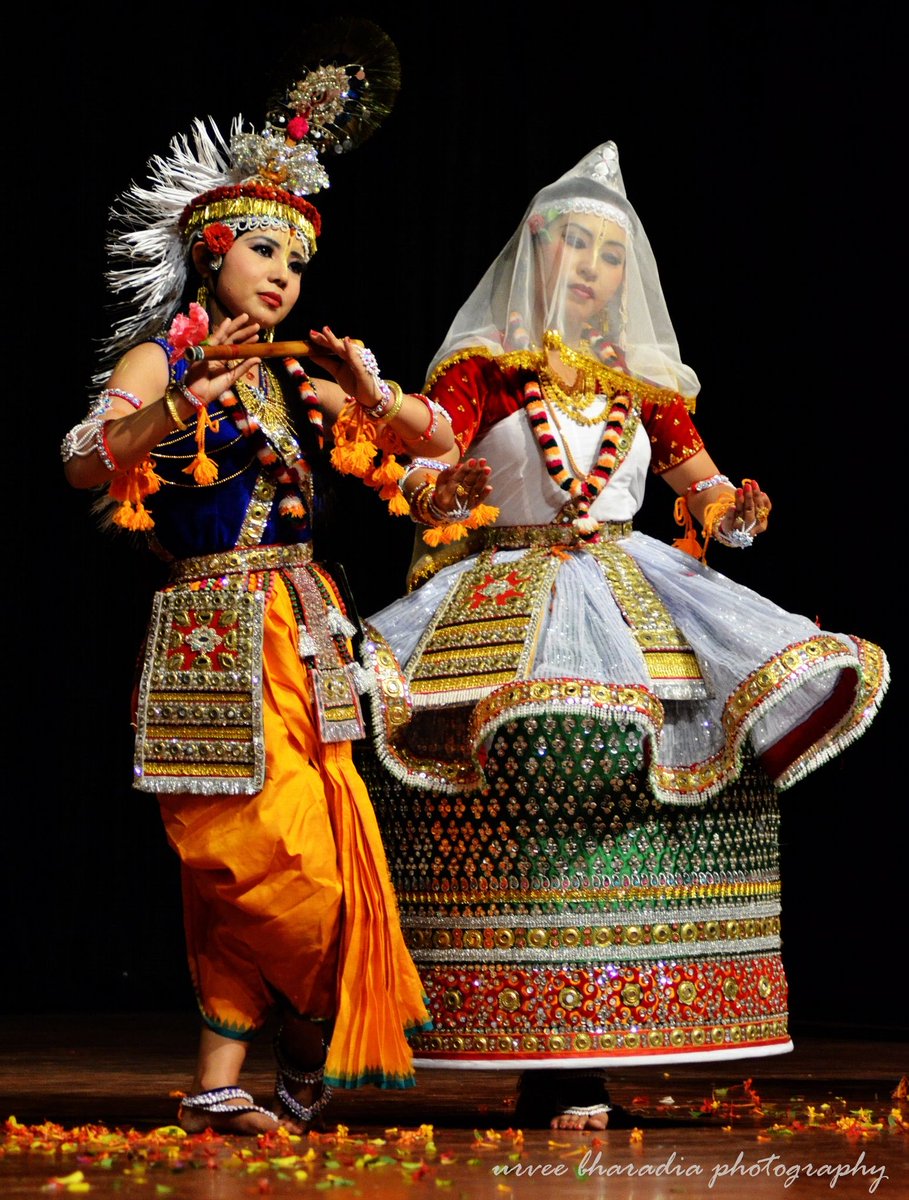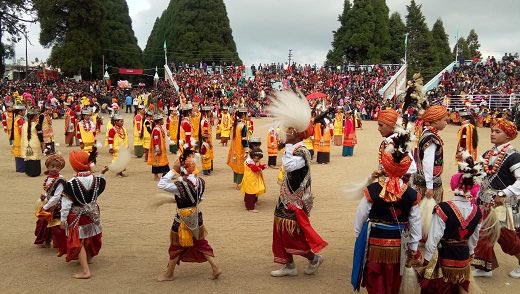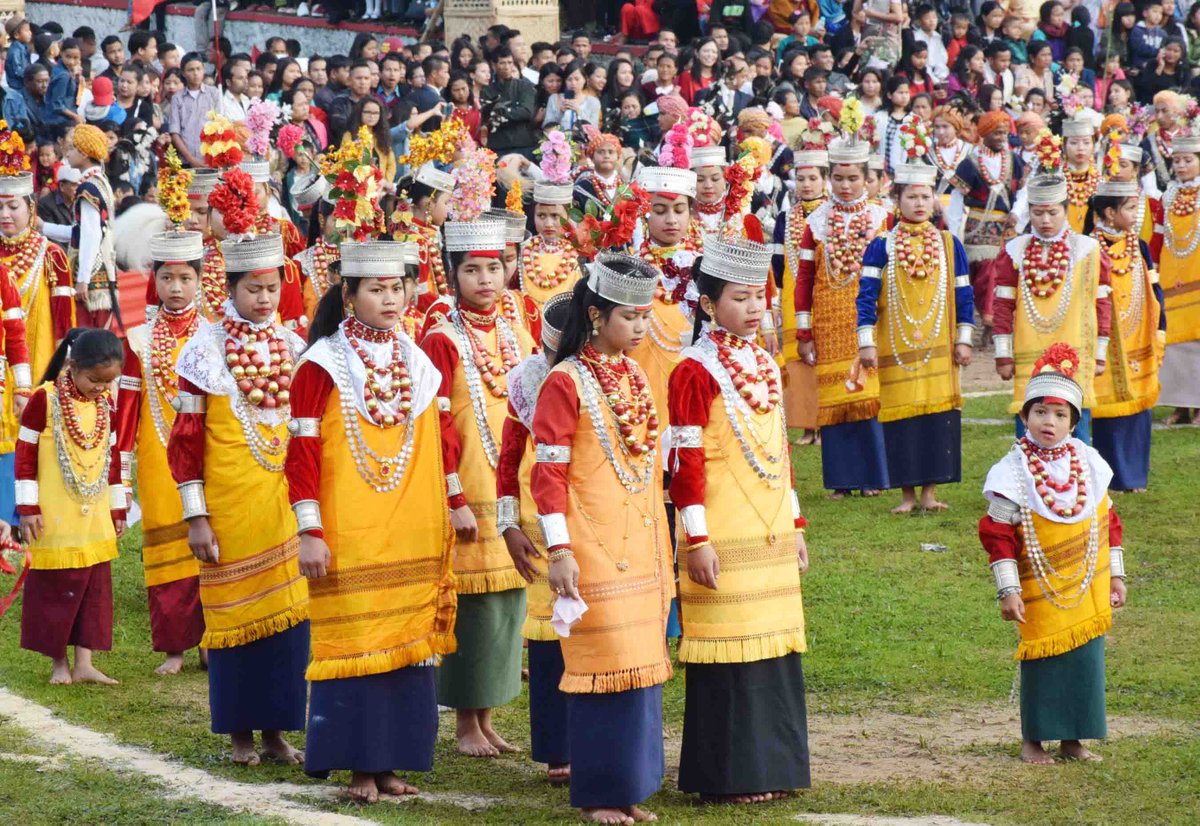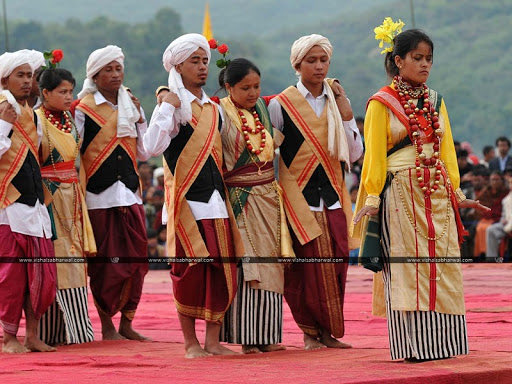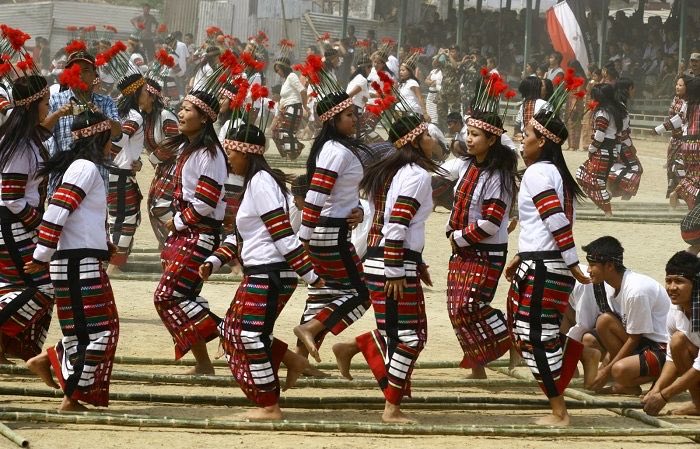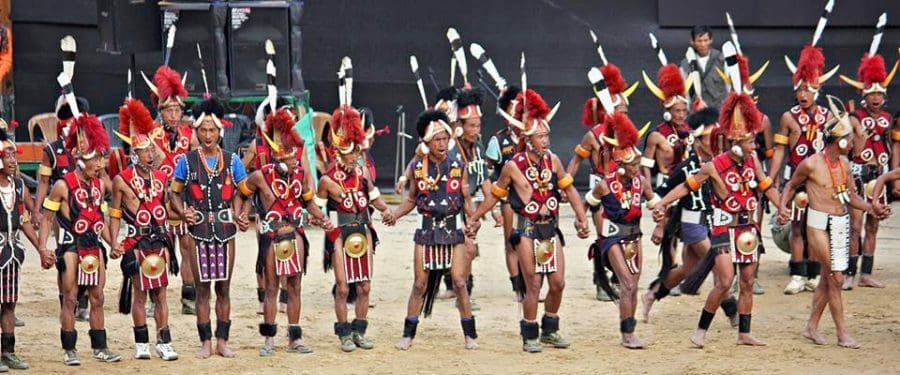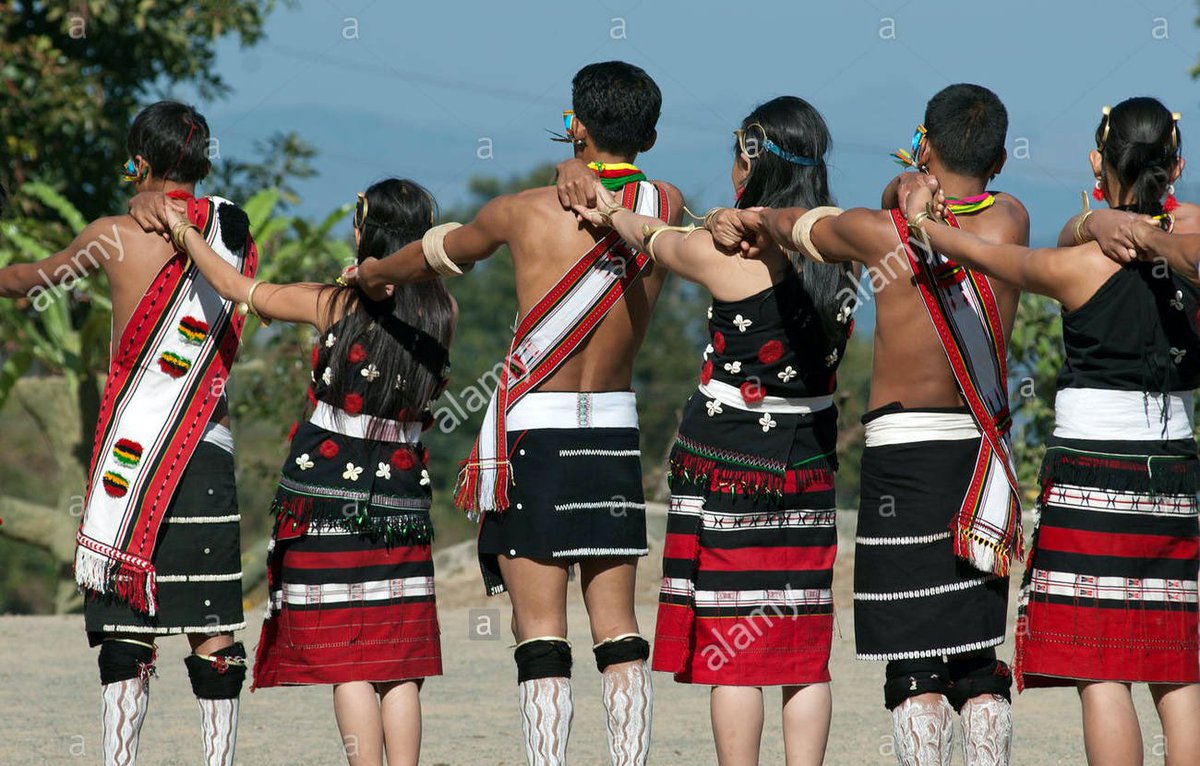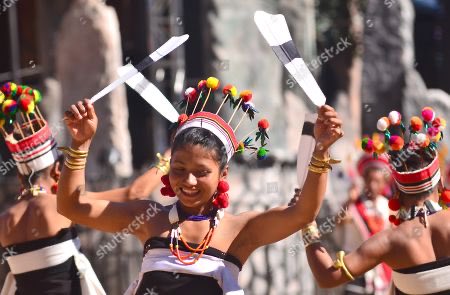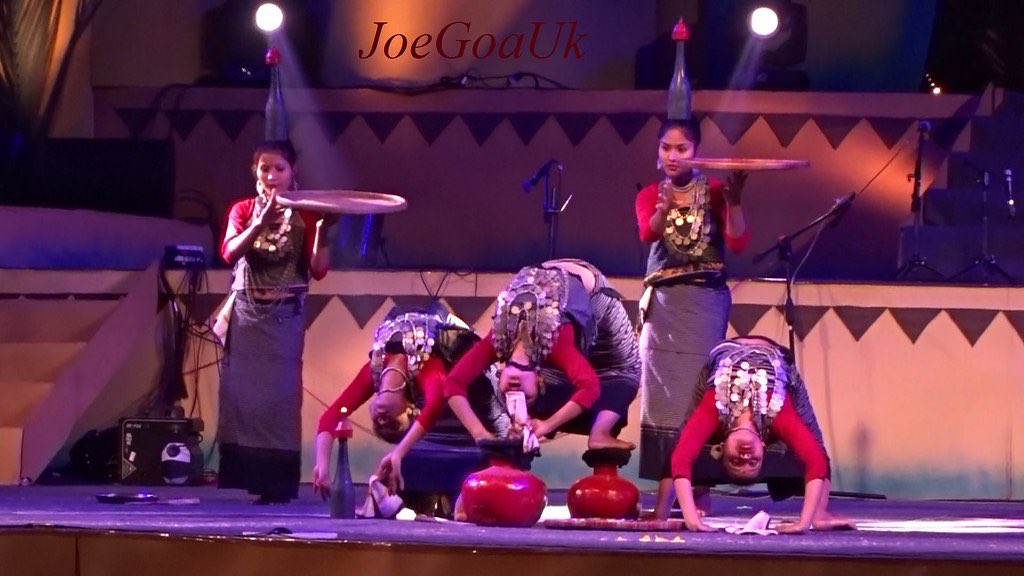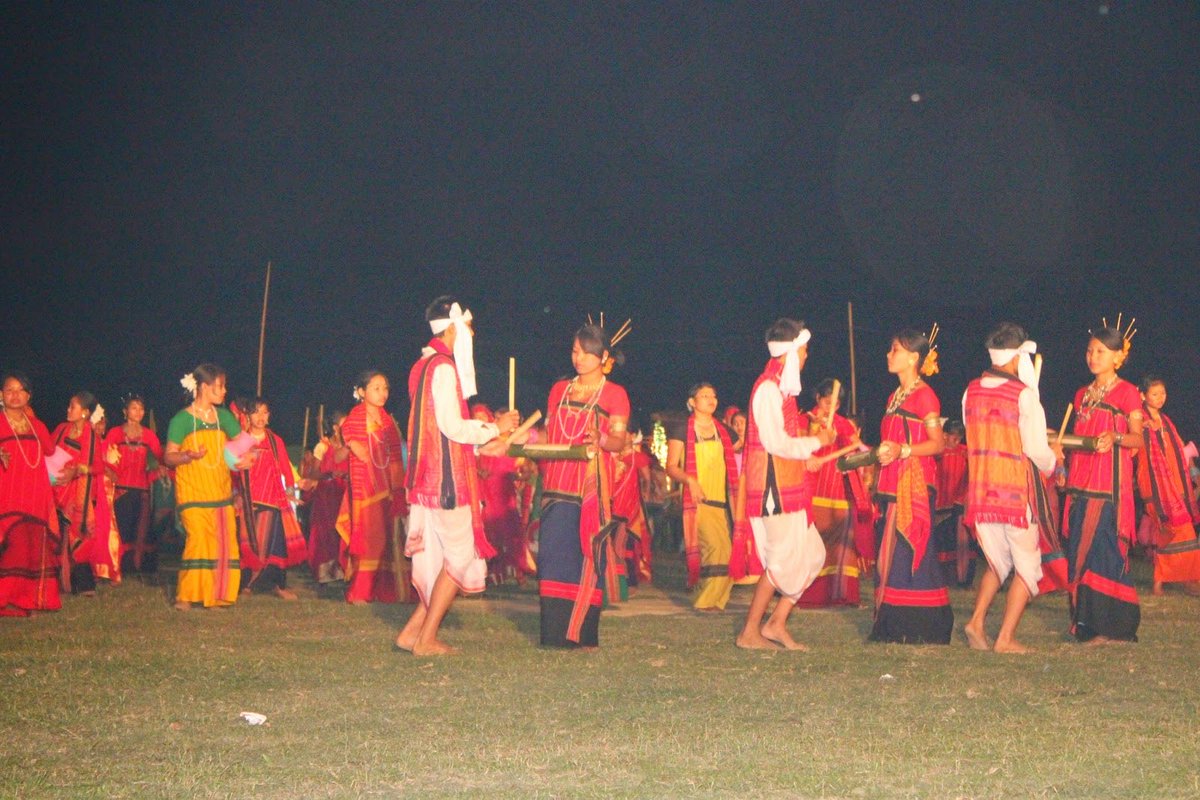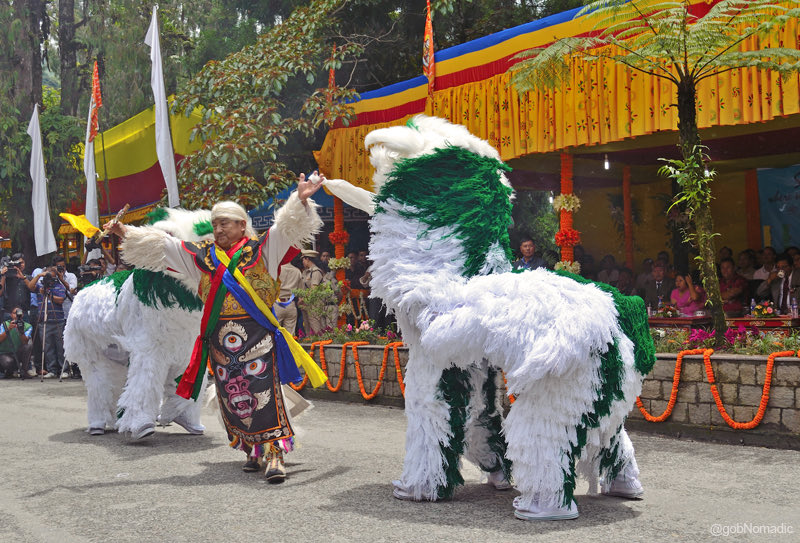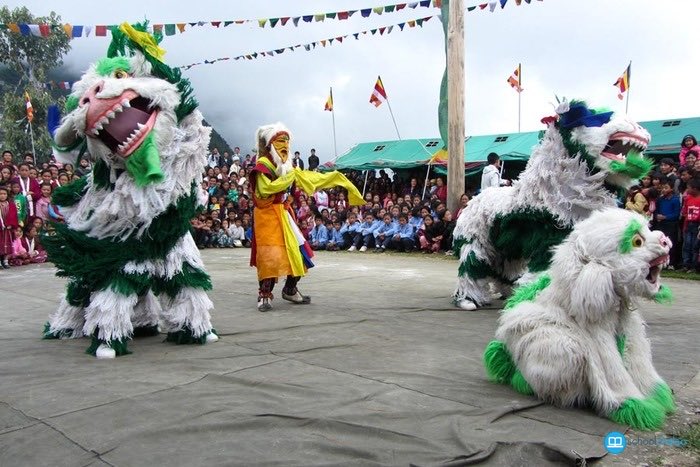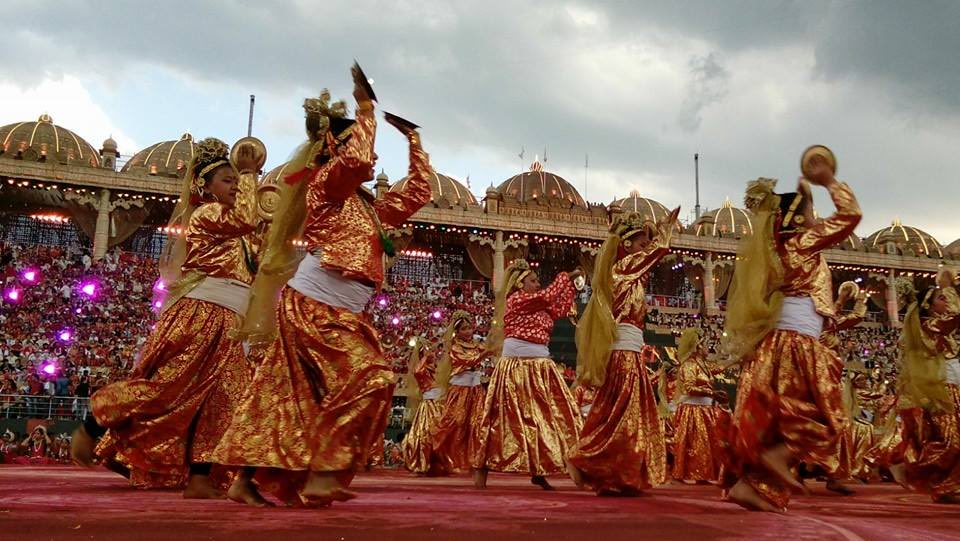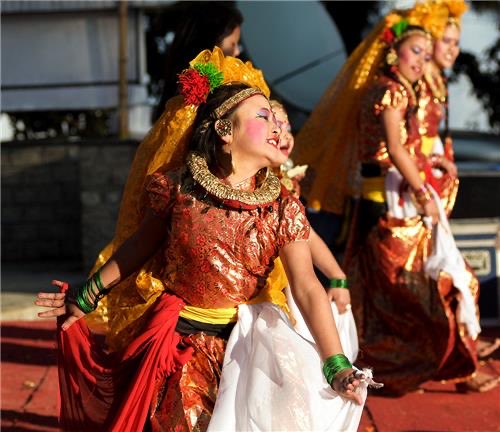the Northeast is extremely diverse, to the point where a lot isn’t well documented yet, so I scoured whatever I could. any mistakes are purely mine and I would appreciate it if you could further educate me.
a small thread on a few (of many) NorthEastern traditional dances :
a small thread on a few (of many) NorthEastern traditional dances :
Arunachal Pradesh
- Bardo Chham -
from the West Kameng district, based on stories of good and evil. the Sherdukpens mask themselves to represent different animals and dance to show an act of fighting the evil forces
- Bardo Chham -
from the West Kameng district, based on stories of good and evil. the Sherdukpens mask themselves to represent different animals and dance to show an act of fighting the evil forces
Arunachal Pradesh
- Ponung Dance -
performed before harvest season, and considered one of the most important folk dances there, women dancers are led by a single sword like instrument called a ‘Yoksha’.
- Ponung Dance -
performed before harvest season, and considered one of the most important folk dances there, women dancers are led by a single sword like instrument called a ‘Yoksha’.
Arunachal Pradesh
- Wancho Dance -
primarily performed by the Wancho tribe during festivals and in complete traditional attire. Men are seen holding and thrusting swords taking turns with women singing the songs as a ‘response’ to the men.
- Wancho Dance -
primarily performed by the Wancho tribe during festivals and in complete traditional attire. Men are seen holding and thrusting swords taking turns with women singing the songs as a ‘response’ to the men.
Arunachal Pradesh
- Buiya Dance -
performed by the Digaru Mishmis, the ladies stand in a straight line paving the way for a formation with the men playing different instruments like drums, gongs and cymbals
- Buiya Dance -
performed by the Digaru Mishmis, the ladies stand in a straight line paving the way for a formation with the men playing different instruments like drums, gongs and cymbals
Assam
- Bihu Dance -
it pretty much dominates all the Bihu festivals, performed by young people symbolising love and affection. Dances can be in rows or circles and is honestly beautiful to watch and listen to.
- Bihu Dance -
it pretty much dominates all the Bihu festivals, performed by young people symbolising love and affection. Dances can be in rows or circles and is honestly beautiful to watch and listen to.
Assam
- Bagurumba -
a dance inspired by nature, the Bodo tribe boasts of this beautiful dance. Usually performed by women, it can further be classified based on the elements of nature like plants, animals, water, earth, fire etc.
- Bagurumba -
a dance inspired by nature, the Bodo tribe boasts of this beautiful dance. Usually performed by women, it can further be classified based on the elements of nature like plants, animals, water, earth, fire etc.
Assam
- Jhumur -
although very famous in other parts of india, it is very well celebrated amongst the tribes from the beautiful tea estates of Assam. considered to be performed to revive each other after a tiring day toiling in the estates.
- Jhumur -
although very famous in other parts of india, it is very well celebrated amongst the tribes from the beautiful tea estates of Assam. considered to be performed to revive each other after a tiring day toiling in the estates.
Assam
- Ojapali-
considered to be one of the oldest art forms of Assam, it is performed by a group of men being led by a leader, or an “Oja” to showcase the rich tradition, it predominantly conveys stories from Hindu epics as well other religious texts.
- Ojapali-
considered to be one of the oldest art forms of Assam, it is performed by a group of men being led by a leader, or an “Oja” to showcase the rich tradition, it predominantly conveys stories from Hindu epics as well other religious texts.
Assam
- Sattriya-
an Indian classical dance form originating from the krishna centred monasteries & attributed to the scholar & saint Mahapurush Srimanta Sankardev. it was primarily performed by male monks, but
modern Sattriya includes women and explores new themes nowadays
- Sattriya-
an Indian classical dance form originating from the krishna centred monasteries & attributed to the scholar & saint Mahapurush Srimanta Sankardev. it was primarily performed by male monks, but
modern Sattriya includes women and explores new themes nowadays
Manipur
- Pung or Dhol Cholom-
or the ‘roar of the drums’, it is a combination of drums being played while being graceful in acrobatic formations. It is usually performed as a prelude to Ras Leela
- Pung or Dhol Cholom-
or the ‘roar of the drums’, it is a combination of drums being played while being graceful in acrobatic formations. It is usually performed as a prelude to Ras Leela
Manipur
- Luivat Pheizak -
popular amongst the Tangkhul Naga community of Manipur, it depicts the different stages of cultivation and the simple lifestyle of the community and is performed during all traditional festivals in the state
- Luivat Pheizak -
popular amongst the Tangkhul Naga community of Manipur, it depicts the different stages of cultivation and the simple lifestyle of the community and is performed during all traditional festivals in the state
Manipur, Assam, Nagaland
- Shim Lam Dance -
also known as the fly dance from the Rongmei tribe, the performers in bright colourful traditional outfits spin in circles around each other while to the rhythm of chanting singers in the background.
- Shim Lam Dance -
also known as the fly dance from the Rongmei tribe, the performers in bright colourful traditional outfits spin in circles around each other while to the rhythm of chanting singers in the background.
Manipur
- Thang ta Dance -
an incredibly beautiful martial arts form of dance by people from all walks of life in Manipur, it portrays mastery in swindling sharp metallic swords , daggers to wooden spears while flying graceful in a swift motion
- Thang ta Dance -
an incredibly beautiful martial arts form of dance by people from all walks of life in Manipur, it portrays mastery in swindling sharp metallic swords , daggers to wooden spears while flying graceful in a swift motion
Manipur
- Manipuri Dance or Jagoi -
another major Indian classical dance, it is know for its Ras Leela based themes, soulful movements and intricate dresses. It is accompanied by devotional music and instruments and is predominantly performed in the Meitei community
- Manipuri Dance or Jagoi -
another major Indian classical dance, it is know for its Ras Leela based themes, soulful movements and intricate dresses. It is accompanied by devotional music and instruments and is predominantly performed in the Meitei community
Meghalaya
- Nongkrem Dance-
performed by young ones from the Khasi Hills in the months of May & November, it is performed to respect the deities of the tribe. Extremely vibrant, initially it may look easy but it requires immense strength, skills and patience to perform
- Nongkrem Dance-
performed by young ones from the Khasi Hills in the months of May & November, it is performed to respect the deities of the tribe. Extremely vibrant, initially it may look easy but it requires immense strength, skills and patience to perform
Meghalaya
- Wanma Rongchua / Wangala -
from the Garo tribe, it is performed at the end of an agricultural year as a thanksgiving to the deities of the tribe. men beat their drums and move to the music of gongs, buffalo horns & flutes with women dancing in parallel rows
- Wanma Rongchua / Wangala -
from the Garo tribe, it is performed at the end of an agricultural year as a thanksgiving to the deities of the tribe. men beat their drums and move to the music of gongs, buffalo horns & flutes with women dancing in parallel rows
Meghalaya
- Laho Dance -
from the Jaintia tribe, usually two young men on either side of a girl will link arms together and dance in a step. a ‘cheer leader’ will be reciting a poem in a rhythmic manner with usually funny connotations
- Laho Dance -
from the Jaintia tribe, usually two young men on either side of a girl will link arms together and dance in a step. a ‘cheer leader’ will be reciting a poem in a rhythmic manner with usually funny connotations
Mizoram
- Cheraw Dance -
Performed with bamboo staves, the men usually move the staves in horizontal and vertical directions with the women dancing in between them.
it is said that a lot of South East Asian tribes have similar dances with different names
- Cheraw Dance -
Performed with bamboo staves, the men usually move the staves in horizontal and vertical directions with the women dancing in between them.
it is said that a lot of South East Asian tribes have similar dances with different names
Mizoram
- Khuallam Dance -
Known as the ‘dance of the guests’, t is performed in a ceremony called Khuangchawi. Traditional hand woven Mizo cloth, or a Puandum is wrapped over the shoulders and the dance is performed by swaying the cloth to the sound of gongs
- Khuallam Dance -
Known as the ‘dance of the guests’, t is performed in a ceremony called Khuangchawi. Traditional hand woven Mizo cloth, or a Puandum is wrapped over the shoulders and the dance is performed by swaying the cloth to the sound of gongs
Nagaland
- Chang Lo -
Performed to celebrate victories over enemies, a war dance where dancers adorn themselves in warrior costumes and days, shields and spears to exhibit war tactics. Women show a motion of swooning over their heroes in the dance.
- Chang Lo -
Performed to celebrate victories over enemies, a war dance where dancers adorn themselves in warrior costumes and days, shields and spears to exhibit war tactics. Women show a motion of swooning over their heroes in the dance.
Nagaland
- Zeliang Dance-
sometimes unknown to a lot of other tribes, the Zeliang tribe allows its women to partake in this traditional dance form, the dancers in different formations are seen stomping their feet to the background murmur of chants and claps.
- Zeliang Dance-
sometimes unknown to a lot of other tribes, the Zeliang tribe allows its women to partake in this traditional dance form, the dancers in different formations are seen stomping their feet to the background murmur of chants and claps.
Tripura
- Hojagiri Dance -
a well know traditional dance form where women are seen balancing earthen lamps, bottles and plates, it a major dance form from Tripura.
- Hojagiri Dance -
a well know traditional dance form where women are seen balancing earthen lamps, bottles and plates, it a major dance form from Tripura.
Tripura
- Bizhu Dance -
From the Chakma tribe, to bid adieu to old year and welcome the onset of a New Year as per the Bengali calendar. It is a graceful dance unlike other dance forms in that it is marked by abrupt pauses during its performance
- Bizhu Dance -
From the Chakma tribe, to bid adieu to old year and welcome the onset of a New Year as per the Bengali calendar. It is a graceful dance unlike other dance forms in that it is marked by abrupt pauses during its performance
Sikkim
- Singhi Chham -
from the brother state, dancers perform in lion costumes representing the snow lion. From the Bhutia people, the dance is companied by a single drummer. It is considered to hold religious beliefs to the peaks Kangchenjunga’s snow felines.
- Singhi Chham -
from the brother state, dancers perform in lion costumes representing the snow lion. From the Bhutia people, the dance is companied by a single drummer. It is considered to hold religious beliefs to the peaks Kangchenjunga’s snow felines.
Sikkim
- Maruni Dance -
very well known amongst the Nepali community of Sikkim, it is performed in weddings by both men & women adorned in colourful dresses. upto 9 different musical instruments called Naumati Baja is accompanied
- Maruni Dance -
very well known amongst the Nepali community of Sikkim, it is performed in weddings by both men & women adorned in colourful dresses. upto 9 different musical instruments called Naumati Baja is accompanied
again, to reiterate, please come in with more suggestions and images. there’s so many beautiful art forms I couldn’t find a lot of images even if the dance forms are well know :(
Any mistakes pointed out respectfully will be accepted and corrected https://abs.twimg.com/emoji/v2/... draggable="false" alt="💜" title="Violettes Herz" aria-label="Emoji: Violettes Herz">
https://abs.twimg.com/emoji/v2/... draggable="false" alt="💜" title="Violettes Herz" aria-label="Emoji: Violettes Herz">
Any mistakes pointed out respectfully will be accepted and corrected
https://twitter.com/aprilyoongi/status/1317773050453000193?s=19">https://twitter.com/aprilyoon...

 Read on Twitter
Read on Twitter